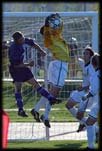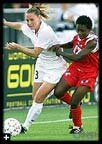Dylan Rice Class 2021 - Soccer Recruiting Video, All American, AGR, All
Greater Rochester Player of the year, Section V player of the year, 1st
Team All State, 1st Team All County.
Attention Coaches and Recruiters:
Please refer to the contact information on the below video to contact this student-athlete.
US Sports Network has little to no direct contact with the student-athletes, parents, coaches, and administrators we profile.
Attention Coaches and Recruiters:
Please refer to the contact information on the below video to contact this student-athlete.
US Sports Network has little to no direct contact with the student-athletes, parents, coaches, and administrators we profile.
Presented on US Sports Net by Game Planner Pro!
Enter Code USSports to save 10% off the annual subscription. For Football Coaches, By Football Coaches Learn More...
Enter Code USSports to save 10% off the annual subscription. For Football Coaches, By Football Coaches Learn More...
Training A Soccer Player: The Basics.
Soccer,
or football as it's called outside of the States, is the number one
sport in the world. Since the majority of the game is played without
the ball, we will focus our discussion on training without possession...
Soccer, or futball as it's called outside of the States, is the No. 1 sport in the world. Even in the US,
soccer is the
most played sport in the youth age bracket. With the growing emergence
of professional soccer and the youth of yesterday playing more and more
today, soccer conditioning is quickly becoming big business for trainers
in the know. So how do you train a soccer player? Long-distance
running? Slow isolation movements in the gym? Quick short sprints?
Plyometrics? The list of possibilities are endless, but the correct training protocol is not.
First, let's look at how the game is played. A regular soccer match
consists of two 45-minute halves with a 15-minute break in-between.
Substitutions are less regular at the higher levels of play and like basketball,
can only be made at the time the ball goes out of bounds. There are
zero time outs for rest or strategy changing. The game also consists of
four main position categories: forward (offense), halfback, fullback
(defense), and a goalkeeper. It's obvious to those who have played or
watched a full match that different positions require different energy
demands and body compositions in order to excel.
Since the majority of the game is played without the ball, we will focus our discussion on training without possession and leave the ball skill up to the coaches.
The goalkeeper, hopefully, gets the least amount of action. They generally are coming from a state of standing still to going into an explosive movement. The energy requirements are going to be almost purely from the ATP/CP energy pathway. Therefore, it would seem having goalies run timed miles or "Cooper tests" is illogical at best. Explosive plyometrics, agility drills, reaction training, and Olympic lifts should be the bulk of a goalies conditioning routine. Obviously, a lower percent body fat will improve the likely hood of getting from one side of the net to the other (regulation soccer goals are 24 feet wide and 8 feet high).
Goalies:
 Recently, I had a discussion with a local trainer who was bragging
about his client's time in for the 40. He boasted he trained the
goalkeeper four times per week and tested him for the 40-yard sprint
every two weeks. I just smiled and walked away thinking "what a waste of
time and money." While a fast 40 time is good and all, the goalie's box
is only 18 yards off the goal line and rarely, if ever, will a goalie
exceed that distance. An average sprint for a goalie would be about 10
yards. Therefore, why would you test their time during a 40-yard sprint?
It just doesn't make sense.
Recently, I had a discussion with a local trainer who was bragging
about his client's time in for the 40. He boasted he trained the
goalkeeper four times per week and tested him for the 40-yard sprint
every two weeks. I just smiled and walked away thinking "what a waste of
time and money." While a fast 40 time is good and all, the goalie's box
is only 18 yards off the goal line and rarely, if ever, will a goalie
exceed that distance. An average sprint for a goalie would be about 10
yards. Therefore, why would you test their time during a 40-yard sprint?
It just doesn't make sense.

This is why at higher levels of competition you do not see the
goalkeepers conditioning with the rest of the team, but instead doing
sport specific drills either on their own or with a goalkeeper coach.
Fullbacks:
A fullback also has most of his energy requirements coming from the ATP/CP energy pathway: about 90 percent ATP/CP and about 10 percent from the glycolytic pathway. Again, why would you train these individuals like long distance runners? It just doesn't make sense, yet this has been the bulk of traditional training routines for defenders in soccer. A defender must be able to summon quick bursts of speed, be agile, be able to react to someone else's movement, and be able to move someone else around physically.
Defensive Backs:
Generally, defensive players are the bigger guys and gals on the field. They must be able to manhandle the forwards as well as keep up with them on a speed basis. Fancy footwork isn't as important to fullbacks as quick reaction time and starting speed. When the ball is kicked over their heads, it is a dead sprint between them and the usually smaller forward to see who can get there quicker. Upper body strength to push someone off the ball or out of the way comes in handy. Fullbacks should be trained for starting strength, plyometrics, reaction time and total body strength. As with all soccer players, bulk isn't necessarily a good thing. More size usually means less speed, while more strength will generally mean winning more of the 50/50 balls.
Halfbacks:
 Now the halfbacks; a halfback usually will do the bulk of the running.
Since a soccer field is usually about 120 yards long, they travel over
about 70 percent of that distance. The halfback will utilize about 60
percent of their energy from the ATP/CP energy pathway, 20 percent from
the glycolytic pathway, and 20 percent from the oxidative pathway. The
primary training consideration for halfbacks is anaerobic endurance.
This is where longer runs coupled with sprints will actually come in
handy.
Now the halfbacks; a halfback usually will do the bulk of the running.
Since a soccer field is usually about 120 yards long, they travel over
about 70 percent of that distance. The halfback will utilize about 60
percent of their energy from the ATP/CP energy pathway, 20 percent from
the glycolytic pathway, and 20 percent from the oxidative pathway. The
primary training consideration for halfbacks is anaerobic endurance.
This is where longer runs coupled with sprints will actually come in
handy.
Starting strength, non-linear speed, Olympic lifts, and anaerobic endurance should compose the bulk of a halfback's conditioning program. Again, leave the dribbling drills to the coaches and use your time to focus on conditioning.
Forwards:
With forwards you are going to have to think about who they are up against, the fullbacks, and what energy pathways they will primarily be utilizing. Forwards primarily utilize 50 percent of their energy from the ATP/CP energy pathway, 30 percent from the glycolytic pathway, and 20 percent from the oxidative pathway. Forwards must be able to sustain frequent short sprints and even longer durations of jogging than most other players-not to mention taking shots from the defense. When training a forward, the focus should be placed on SAQ: speed, agility, and quickness. Also, make sure that you are not training or conditioning any of these athletes in one plane of motion. Like most sports, soccer involves explosive turns and twists. Your client should be ready for movement in all directions.
Special Training
Special training considerations and individual specificity is beyond the scope of this article. Remember that these are generalizations and each athlete should be trained to meet his or her specific needs. As athletes progress through their sport, they further tend to specialize in their duty and/or position.
It is paramount that these consideration be addressed during the assessment phase of the training program. Also, remember that it's important to test and re-test to insure progress, but please, make the tests valid to the goal of the activity. Check back soon for more soccer training articles!
Thanks,
Since the majority of the game is played without the ball, we will focus our discussion on training without possession and leave the ball skill up to the coaches.
The goalkeeper, hopefully, gets the least amount of action. They generally are coming from a state of standing still to going into an explosive movement. The energy requirements are going to be almost purely from the ATP/CP energy pathway. Therefore, it would seem having goalies run timed miles or "Cooper tests" is illogical at best. Explosive plyometrics, agility drills, reaction training, and Olympic lifts should be the bulk of a goalies conditioning routine. Obviously, a lower percent body fat will improve the likely hood of getting from one side of the net to the other (regulation soccer goals are 24 feet wide and 8 feet high).
Goalies:
 Recently, I had a discussion with a local trainer who was bragging
about his client's time in for the 40. He boasted he trained the
goalkeeper four times per week and tested him for the 40-yard sprint
every two weeks. I just smiled and walked away thinking "what a waste of
time and money." While a fast 40 time is good and all, the goalie's box
is only 18 yards off the goal line and rarely, if ever, will a goalie
exceed that distance. An average sprint for a goalie would be about 10
yards. Therefore, why would you test their time during a 40-yard sprint?
It just doesn't make sense.
Recently, I had a discussion with a local trainer who was bragging
about his client's time in for the 40. He boasted he trained the
goalkeeper four times per week and tested him for the 40-yard sprint
every two weeks. I just smiled and walked away thinking "what a waste of
time and money." While a fast 40 time is good and all, the goalie's box
is only 18 yards off the goal line and rarely, if ever, will a goalie
exceed that distance. An average sprint for a goalie would be about 10
yards. Therefore, why would you test their time during a 40-yard sprint?
It just doesn't make sense. Fullbacks:
A fullback also has most of his energy requirements coming from the ATP/CP energy pathway: about 90 percent ATP/CP and about 10 percent from the glycolytic pathway. Again, why would you train these individuals like long distance runners? It just doesn't make sense, yet this has been the bulk of traditional training routines for defenders in soccer. A defender must be able to summon quick bursts of speed, be agile, be able to react to someone else's movement, and be able to move someone else around physically.
Defensive Backs:
Generally, defensive players are the bigger guys and gals on the field. They must be able to manhandle the forwards as well as keep up with them on a speed basis. Fancy footwork isn't as important to fullbacks as quick reaction time and starting speed. When the ball is kicked over their heads, it is a dead sprint between them and the usually smaller forward to see who can get there quicker. Upper body strength to push someone off the ball or out of the way comes in handy. Fullbacks should be trained for starting strength, plyometrics, reaction time and total body strength. As with all soccer players, bulk isn't necessarily a good thing. More size usually means less speed, while more strength will generally mean winning more of the 50/50 balls.
Halfbacks:
 Now the halfbacks; a halfback usually will do the bulk of the running.
Since a soccer field is usually about 120 yards long, they travel over
about 70 percent of that distance. The halfback will utilize about 60
percent of their energy from the ATP/CP energy pathway, 20 percent from
the glycolytic pathway, and 20 percent from the oxidative pathway. The
primary training consideration for halfbacks is anaerobic endurance.
This is where longer runs coupled with sprints will actually come in
handy.
Now the halfbacks; a halfback usually will do the bulk of the running.
Since a soccer field is usually about 120 yards long, they travel over
about 70 percent of that distance. The halfback will utilize about 60
percent of their energy from the ATP/CP energy pathway, 20 percent from
the glycolytic pathway, and 20 percent from the oxidative pathway. The
primary training consideration for halfbacks is anaerobic endurance.
This is where longer runs coupled with sprints will actually come in
handy. Starting strength, non-linear speed, Olympic lifts, and anaerobic endurance should compose the bulk of a halfback's conditioning program. Again, leave the dribbling drills to the coaches and use your time to focus on conditioning.
Forwards:
With forwards you are going to have to think about who they are up against, the fullbacks, and what energy pathways they will primarily be utilizing. Forwards primarily utilize 50 percent of their energy from the ATP/CP energy pathway, 30 percent from the glycolytic pathway, and 20 percent from the oxidative pathway. Forwards must be able to sustain frequent short sprints and even longer durations of jogging than most other players-not to mention taking shots from the defense. When training a forward, the focus should be placed on SAQ: speed, agility, and quickness. Also, make sure that you are not training or conditioning any of these athletes in one plane of motion. Like most sports, soccer involves explosive turns and twists. Your client should be ready for movement in all directions.
Special Training
Special training considerations and individual specificity is beyond the scope of this article. Remember that these are generalizations and each athlete should be trained to meet his or her specific needs. As athletes progress through their sport, they further tend to specialize in their duty and/or position.
It is paramount that these consideration be addressed during the assessment phase of the training program. Also, remember that it's important to test and re-test to insure progress, but please, make the tests valid to the goal of the activity. Check back soon for more soccer training articles!
Thanks,




No comments:
Post a Comment